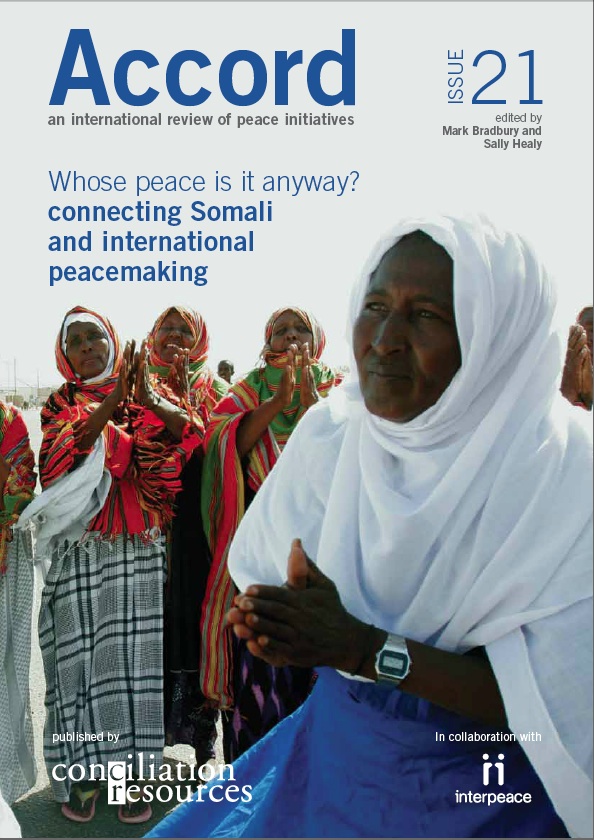Economic factors underlie much of the recent conflict in Somalia. Rival factions continually struggle to control land, natural resources and ports of trade which generate revenue.
Before its collapse in 1990-91, the Siyad Barre regime had used a combination of socialist-style legislation, international military and relief assistance, and political nepotism in an effort to capture the country’s major economic assets and concentrate economic power at the centre.
After 1991 victorious factions competed to take control of urban and rural assets that had enriched the supporters of the old regime. In the south an array of armed militias drawing heavily on recruits from the pastoral clans of central Somalia occupied the homes and shops of town residents, seized key ports and airstrips, and imposed tributary regimes over many of the productive farming districts along and between the Shabelle and Juba rivers.
In Somaliland and Puntland, in contrast, locally based militias recaptured economic assets in their regions and established autonomous governments, which had to develop their own local sources of revenue.
Since the collapse of the state, the quest for economic security – and power – has taken place at local and regional levels. Throughout Somalia countless actors seek access to whatever sources of local revenue are available. Everything has a strong economic component, from the imposition of roadblocks along strategic transport routes, to pirate operations off the northeast coast, and efforts by competing ‘religious’ movements (including Al Shabaab) to seize control of village courts and local police forces.
Despite what is clearly a locally oriented, economically driven quest for security by Somalia’s citizens, international efforts to bring stability to the country have focused on political institutions. National peace conferences have had as their goal the restoration of a functioning central government, on the assumption that effective national governance is a prerequisite for economic recovery.
These efforts have viewed Somalis primarily as political actors who need to be reconciled around the ‘governmental table’. Indeed most Somalis love politics, and the country’s powerbrokers (including many businesspeople) have benefited considerably from the infusion of international aid in support of peace conferences and interim government budgets.
Yet such initiatives have done little to bring economic security to the majority of Somali citizens; in fact they seem to be perpetuating certain patterns of political behavior that hinder the search for peace. There are three primary problems with such an approach:
1. The preoccupation with political representation at the centre has resulted in interminable negotiations over who should sit in government – presumably to help solve future problems – rather than in focused efforts to deal with the array of problems which exist now.
2. Actors who benefit from local extortion rackets or commerce in war materials continue to act as ‘spoilers’ whenever national political negotiations approach consensus on matters of national security or government regulation.
3. Focusing on formulas for political ‘power sharing’ does little to regularise or institutionalise practices which promote economic security, create belief in the idea of a government that serves the common good, or instill confidence in the international donor community.
Somalis need to be understood as economic as well as political actors. Somalia’s 20th century history provides numerous examples of Somalis’ ability to rebuild local economies even after prolonged periods of war, drought or social dislocation.
The recent success of the Somaliland experiment – however fragile – is instructive. Wherever one stands on the sovereignty issue, most would agree that the north’s initial economic recovery occurred in spite of (or maybe because of?) the fact that the Somaliland state did not have the capacity to intervene very strongly in the private sector. As a result the region succeeded in attracting valuable contributions of money, skills and professional expertise from members of its own diaspora and from a number of NGOs.
The vibrant commerce between Somaliland and eastern Ethiopia, and across Somalia’s border with Kenya, has also brought modest prosperity to many in the transport, hotel, and retail trade sectors. In other words, it appears that in several parts of the Horn of Africa, economic recovery is leading political recovery, despite our intuitive sense that political reconstruction ought to come first.
Evidence suggests that the international donor community, along with most Somali politicians, have their priorities wrong. They have put their intellects and their energies and their resources into finding political solutions first, which is always the most difficult thing for Somalis to achieve; and not enough energy and resources into building on what Somalis do best – that is responding to economic opportunities.
Perhaps we should look for ways to build political consensus on the foundations of economic security, rather than vice versa? One need not abandon the quest for a viable system of national governance to begin exploring creative opportunities to build stability and peace outside a narrowly political framework. Might Somalia’s economic entrepreneurs – rather than its political ones – be leading the way to stability and security in the region?

